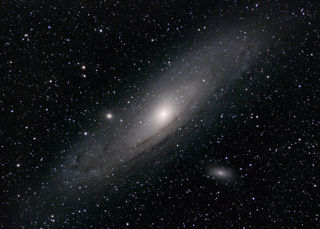
Apollo 15 Training Sun Compass
Apollo 15 Training Sun Compass
This strange object shows how NASA sometimes turns to archaic technology. Used in training for the Apollo 15 mission, this Sun Compass was designed to help orientate astronauts on the alien surface of the Moon. Sun compasses can trace their history back to at least the fourteenth Century, with some experts believing that this ancient navigation technology was first used by the Vikings.A normal compass would not work on the Moon, due to the lack of a strong magnetic North Pole like we have here on Earth. The crew of Apollo 15 were the first mission to use the Lunar Rover Vehicle and travel out of sight of their spacecraft, so there was a serious concern at NASA that if the Rover's onboard navigation system failed the astronauts wouldn't be able to find their way back before they ran out of oxygen. In response the Apollo 15 crew were trained on how to use a Sun Compass alongside an Overlay Map to provide a back-up navigation system.
A Sun Compass works by using time and the angle of the Sun’s shadow to work out direction. By raising the gnomon it is possible to cast a shadow with sunlight, much like a sundial. As NASA knew what shadow angle to expect at any given time of day, all an astronaut had to do was move the whole compass around until the shadow cast hit the expected angle marked on the outside of the compass (a list of shadow angles is written on the back). Once done, this would leave the target mark on the compass pointing north (or to whatever bearing it had been set to find). This simple procedure allowed the astronauts to work out where north was, as well as plot their bearing on a map - so that they could find their way back to their spacecraft on foot if the Rover broke down.
On the reverse of the Sun Compass, alongside the list of EVA (spacewalk) times and expected shadow angles, is a hand-drawn range finder. As the crew knew the size of the Lunar Module, this small set of lines were used to determine the estimated distance back to it. On the Moon, without the familiarity of reference points and the horizon being a lot closer than on Earth, it was easy to misjudge distances. By holding the card up and sighting the Lunar Module against the hand drawn lines, the astronauts could gauge the distance up to a kilometre away.
All images:
-
![Apollo 15 Training Sun Compass. White gnomon can be seen in the centre, which would lift up to cast the shadow. A spirit level bubble would have been affixed to the metal hole in the centre to keep the object horizontal]()
Apollo 15 Training Sun Compass. White gnomon can be seen in the centre, which would lift up to cast the shadow. A spirit level bubble would have been affixed to the metal hole in the centre to keep the object horizontal -
![Sun Compass, showing two later paper inserts that have been added for use in training]()
Sun Compass, showing two later paper inserts that have been added for use in training -
![Reverse of the Sun Compass, showing the hand drawn range finder and the list of shadow angles predicted for each EVA]()
Reverse of the Sun Compass, showing the hand drawn range finder and the list of shadow angles predicted for each EVA -
![Apollo 15 Training Sun Compass - gnomon can be seen raised]()
Apollo 15 Training Sun Compass - gnomon can be seen raised -
![Apollo 15 Training Sun Compass - gnomon can be seen raised]()
Apollo 15 Training Sun Compass - gnomon can be seen raised -
![Apollo 15 Training Sun Compass - range finder on the reverse helps judge how far away the Lunar Module was]()
Apollo 15 Training Sun Compass - range finder on the reverse helps judge how far away the Lunar Module was -
![Apollo 15 Training Sun Compass - shadow angles on the reverse]()
Apollo 15 Training Sun Compass - shadow angles on the reverse -
![Dave Scott took this image of Jim Irwin, showing a Lunar Module and Lunar Rover Vehicle side-by-side on the Moon for the first time - Credit: NASA]()
Dave Scott took this image of Jim Irwin, showing a Lunar Module and Lunar Rover Vehicle side-by-side on the Moon for the first time - Credit: NASA
Web resources
More information
Object number
2016-7
Location
Artefact Store
Has this object been into space?
No
Dimension - Dimension, Value, Measurement unit
Height: 27.3cm
Width: 17.6cm
Material
Paper
Cardboard
Velcro
Metal
Associated event
Apollo 15
Associated Person
Dave Scott
Al Worden
Jim Irwin
Associated Place
The Moon
Object Production Date
18/06/1971
Object Production Organisation
National Aeronautics and Space Administration
Object Production Place
United States
On Display Status
In storage
Copyright and Photos
Photography is shared via the license below.
However, some objects on this website are on loan to the National Space Centre and are being shared through the permission of their owners.
Commercial use of images from this website is not allowed without additional permissions being granted. To request permission to use images for purposes not covered in the license below, please contact [email protected]
Individual objects on loan to the National Space Centre may have additional copyright permissions, so advice should always be sought before use.
![]()
This work is licensed under a Creative Commons Attribution-NonCommercial 4.0 International License.









